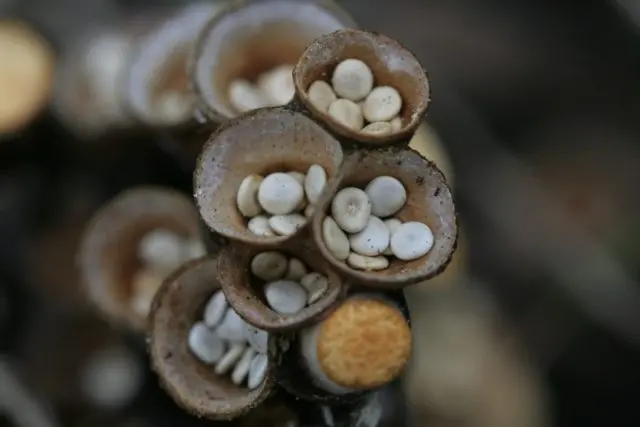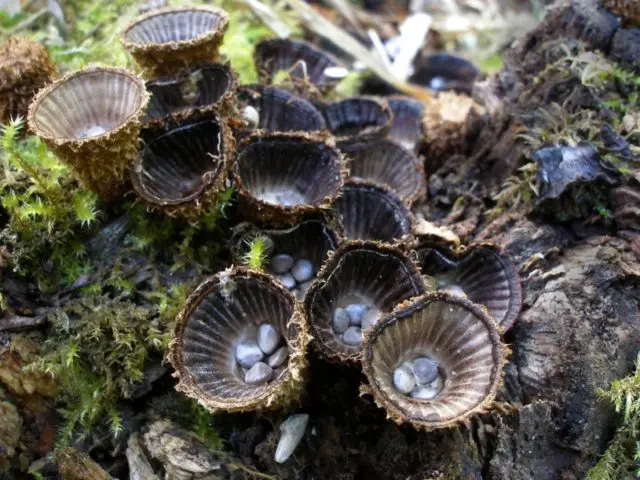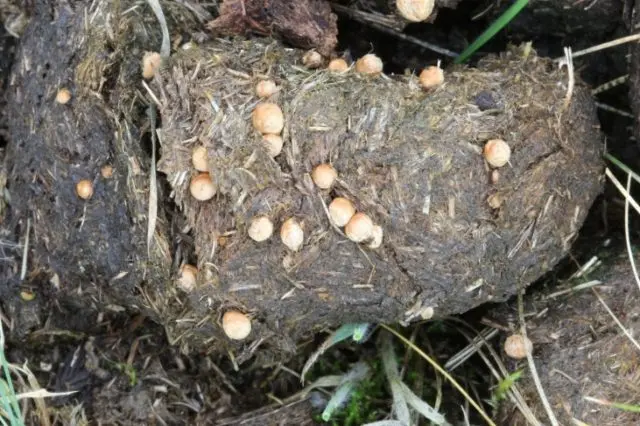Contents
Shapeless nesting is a fungus of the Champignon family, the genus Gnezdovka. The Latin name for this species is Nidularia deformis.
Where the shapeless nest grows
This species settles on rotting wood of coniferous and hardwood species. It can also be found on sawdust, old boards, branches and fallen trees.
Important! The optimal time for the growth of a shapeless nest is the period from mid-summer to late autumn. In regions with a mild climate, it sometimes occurs at the beginning of winter.
What does a shapeless nest look like?
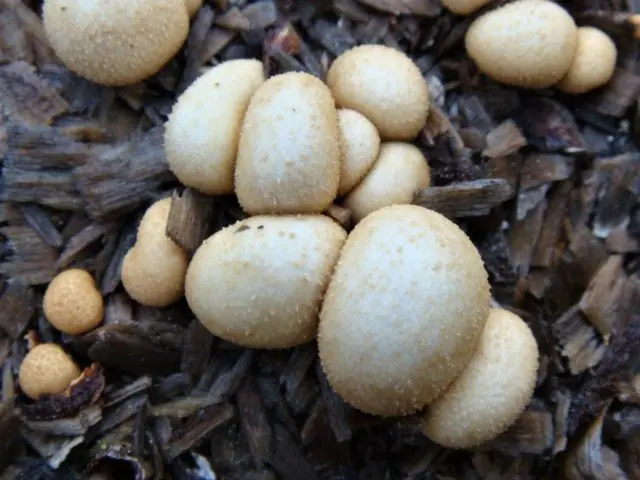
This mushroom is a saprophyte
The fruiting body of this specimen is very unusual. It is sessile, no more than 1 cm in size. At a young age, the surface is smooth, as it grows older it becomes rough. Painted in white, beige or brown shades. As a rule, the fruits grow in large groups, so they look a little flattened on the sides. Solitary mushrooms are round or pear-shaped.
The outer shell, called peridium, is a thin dense wall, after which there is a looser, “felt” layer. Inside it are lenticular peridioli, the size of which is 1-2 mm. At the initial stage of ripening, they are painted in a light tone, with time they become yellowish-brown. The peridioles are free in the brown mucus matrix. When ripe, or even with minor damage, the shell breaks, due to which they are released. Gradually, the shell of the peridiolum is destroyed, from which elliptical, smooth spores emerge.
Is it possible to eat a shapeless nest
There is no information about the edibility of this species. However, most reference books include it in the group of inedible mushrooms. In addition, due to the unusual appearance and small size of the fruiting bodies, not every mushroom picker dares to try this gift of the forest.
Similar species
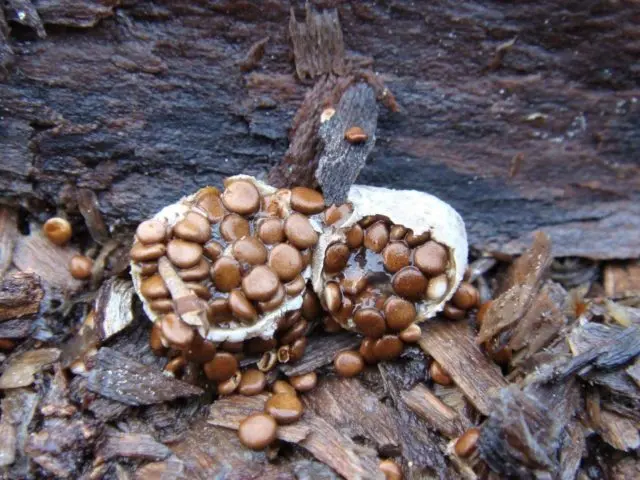
Due to their non-standard shape and structure, these mushrooms are difficult to confuse with other relatives. Close to the shapeless nest are mushrooms called goblets, which also belong to the Champignon family. There are the following types:
- The barrel is smooth. The fruiting body is about 5 mm in diameter, and its height reaches no more than 1 cm. Initially, it is ovoid in shape, covered with a yellowish or ocher felt film, which breaks after a while. After that, the fetus becomes open, retains a cup-shaped or cylindrical shape. It contains lenticular peridioli. Places of growth and the season coincides with the nesting formless. Nothing is known about its edibility.

- A striped goblet, the second name of which is a striped nest. The fruit body of the twin reaches a height of up to 1,5 cm. Initially round or ovoid, brown in color, with time the shell breaks, partially remaining on the walls. Later it becomes cup-shaped, red-brown or brown in color with small peridioles. Not edible.

- A dung goblet is similar in shape and structure to the described specimen. However, a feature is the yellowish or red-brown color of the fruiting body and black peridioli. It grows in dense groups from February to April. Inedible.

- Olla’s goblet is a fairly common species that lives on or near rotting wood. At the initial stage of development, the fruiting body resembles a ball or nest, with time it becomes bell-shaped. A distinctive feature is the lenticular peridioles attached to the shell by a mycelial cord. Belongs to the group of inedible.

Conclusion
Shapeless nest is an unusual specimen that can be found on rotting wood. There is little information about this species, it is rare.










